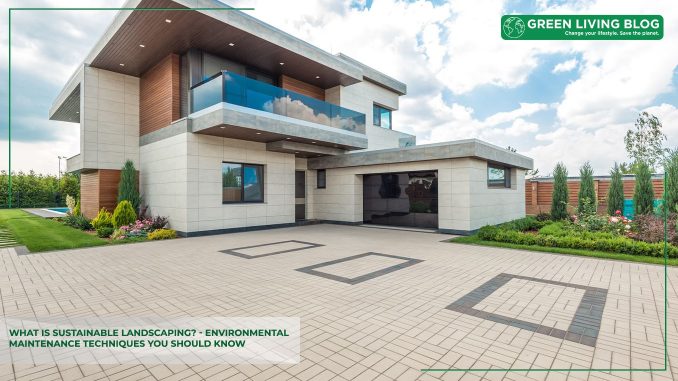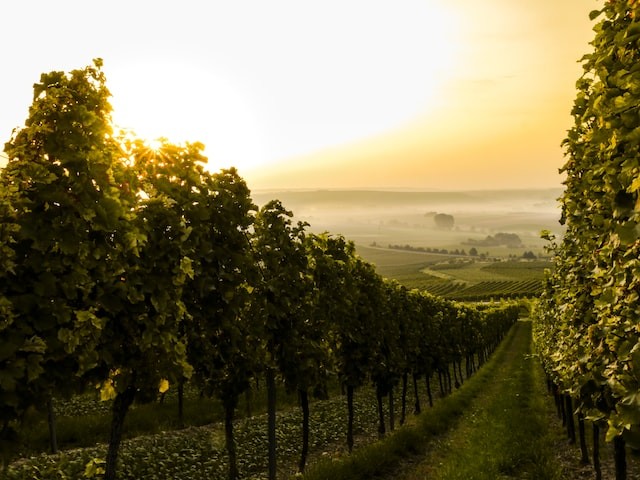
The green revolution is impacting landscaping practices around the world. Gardeners and agricultural professionals are minimizing atmospheric and surface-level pollution with eco-conscious maintenance techniques. The landscaping sector directly impacts natural resources and greenhouse gas emissions.
Individuals and business owners are setting emission reduction goals to improve environmental conservation. Atmospheric preservation may prevent adverse climate change effects.
Professionals are using sustainable landscaping techniques to conserve natural resources for future generations.
What is Sustainable Landscaping?

Sustainable landscaping is an environmental maintenance technique. It creates aesthetic natural regions in balance with the local climate. Sustainable landscapers generally avoid using synthetic additives like pesticides.
Pesticides and synthetic fertilizers disrupt local ecosystems by polluting natural resources. Gardeners substitute contaminants with natural alternatives like compost soil. Compost is nutrient-rich and contains nitrogen, carbon, phosphorus, and potassium.
Individuals may add the material to their landscapes’ soil. The organic additive improves soil fertility levels and reduces erosion. Sustainable landscaping practices can effectively reduce adverse environmental impacts.
How does Landscaping Impact the Environment?

Landscaping directly affects biodiversity, resource preservation, water management, and atmospheric conditions. Unsustainable landscaping practices can increase local greenhouse gas emissions. Clear-cutting vegetated areas during landscaping may reduce Earth’s natural filtration processes.
One tree can absorb and filter around 48 pounds of greenhouse gas emissions annually. Preserving trees and reducing deforestation can significantly minimize atmospheric pollution. Landscaping also directly impacts freshwater conservation efforts.
Only about 0.5% of Earth’s fresh water is available to humanity. Some landscapers create lush lawns in drought-ridden regions, which increases freshwater exploitation. Making unnatural landscape changes may increase resource exploitation.
Individuals can conserve natural resources and prevent adverse climate change effects by creating sustainable gardens. Landscapers may begin new projects by first interpreting the environmental needs. Those seeking guidance on sustainable landscaping practices often turn to experts like Michaelangelo’s, known for their approach to eco-friendly landscape design.
1. Interpret Sustainable Landscaping Needs

Professionals can improve the sustainability and success of their projects by strategically developing a landscaping plan. Individuals should understand their project needs and requirements before changing a landscape. Different projects require varying resources and preparation is essential.
Large-scale landscape changes may require heavy equipment like excavators and tractors. Professionals can locate affordable equipment before beginning a project. They may also identify the top landscape additions to improve sustainability.
2. Add Rainwater Harvesting Systems

The most common sustainable landscaping feature is a rainwater harvesting system. Rainwater harvesting systems hold stormwater in collection barrels. Pumps move the water directly to irrigation systems.
Advanced systems may also pump stormwater through purifiers to remove sediment and contaminants. Using rainwater to support landscapes may significantly reduce freshwater exploitation. It also reduces stormwater runoff, which improves marine conservation.
Stormwater often carries pesticides and synthetic fertilizers to the ocean. The additives contain high levels of nitrogen and phosphorus. Nitrogen and phosphorus cause algal blooms, which deplete marine oxygen levels.
Eutrophication causes forced migration in aquatic regions. Marine species are more susceptible to endangerment outside of their natural habitats. Preventing eutrophication with rainwater harvesting systems significantly increases landscape sustainability.
3. Plant Native Species

Another sustainable landscaping technique is planting native species. Native plants are most compatible with their natural habitats. Unlike foreign species, native plants require minimal additives like water and fertilizer.
They also maintain efficient photosynthesis processes and filter more carbon dioxide. Increasing natural carbon filtration practices minimizes the enhanced greenhouse effect. Landscapers can also reduce pollution using permaculture gardening practices.
4. Use Permaculture Agricultural Practices

Permaculture is the opposite practice of monocropping. Overplanting one species can deplete soil nutrients and cause erosion. Permaculture integrates land, resources, humans, animals, and the environment to stimulate plant growth.
Landscapers can support efficient growth processes by planting mutually beneficial species. Some professionals place low-light plants under leafy, high-light species to naturally support photosynthesis. They may also plant pest-resistant plants on landscapes to minimize degradation.
Individuals can keep cockroaches off their landscapes by planting catnip around the perimeters. They may also prevent mice from destroying vegetation by planting peppermint throughout landscapes. Using natural pest-resistance methods reduces pesticide use and aquatic pollution.
5. Preserve Your Soil Quality

The final sustainable landscaping technique involves preserving soil quality. Landscapers can reduce erosion by rotating native plants. They may also study local weather patterns and climate change effects to protect vegetation during severe storms.
Preserving landscaping soil quality can improve nutrient levels without using additives. It also prevents storm damage and improves resource conservation efforts. Individuals can create sustainable landscapes to decrease atmospheric and surface-level degradation.
Practicing Sustainable Landscaping
Residents and business owners may improve their properties’ sustainability levels by creating eco-friendly landscapes. They can integrate sustainable features into their landscape models by finding eco-conscious landscaping professionals. Individuals may search for professionals with the sustainable landscapes certification (SLC) to ensure the efficiency of ecological preservation.
![]()


Leave a Reply
You must be logged in to post a comment.